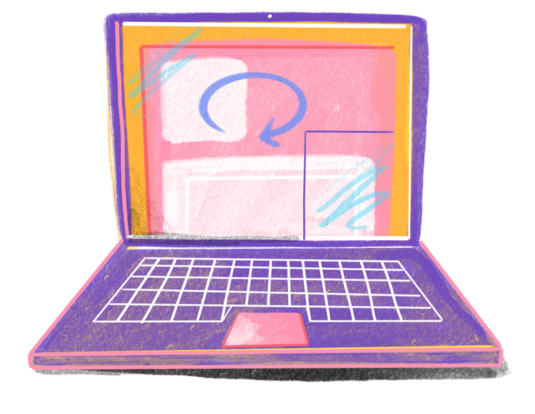Patients and their care partners are usually the first to notice new or changing symptoms and are the connecting “thread” between different healthcare encounters. In this article Sigall Bell, Fabienne Bourgeois, Stephen Liu, and Eric Thomas—along with patient partners Betsy Lowe and Liz Salmi—describe the co-development of an online tool called “OurDX” (Our Diagnosis) to engage patients and families in the diagnostic process
Quality and Safety
Patients, clinicians and open notes: information blocking as a case of epistemic injustice
We address the contrasting perceptions of this practice innovation, and claim that the divergent views of patients and clinicians can be explained as a case of epistemic injustice. Using a range of evidence, we argue that patients are vulnerable to (oftentimes, non-intentional) epistemic injustice. Nonetheless, we conclude that the marginalisation of patients’ access to their health information exemplifies a form of epistemic exclusion, one with practical and ethical consequences including for patient safety.
Patient Access to Mental Health Notes: Motivating Evidence-Informed Ethical Guidelines
In the last decade, many health organizations have embarked on a revolution in clinical communication. Using electronic devices, patients can now gain rapid access to their online clinical records. Legally, patients in many countries already have the right to obtain copies of their health records; however, the practice known as “open notes” is different. Via secure online health portals, patients are now able to access their test results, lists of medications, and the very words that clinicians write about them. Open notes are growing with most patients in the Nordic countries already offered access to their full electronic record. From April 2021, a new federal ruling in the United States mandates—with few exemptions—that providers offer patients access to their online notes.
Speaking up about patient-perceived serious visit note errors: Patient and family experiences and recommendations.
About half of patients and families who perceived a serious mistake in their notes reported it. Identified barriers demonstrate modifiable issues such as establishing clear mechanisms for reporting and more challenging issues such as creating a supportive culture. Respondents offered new ideas for engaging patients and families in improving note accuracy.
Open Notes: New Federal Rules Promoting Open and Transparent Communication
Patients report understanding what they read, and few take issue or pose subsequent questions. When they do, concerns are often warranted. Indeed, when it comes to safety, two eyes on one record can be far more helpful than two eyes perusing 1,000 records. One in five patients report that they find an error, 40% of which they consider serious. Among doctors inviting patients to read their notes for more than a year, 25% reported patients describing errors that they, the doctors, judged serious. Given the potential for finding mistakes early and preventing subsequent harm, among attorneys, patients, and doctors themselves there is consensus that litigation in the aggregate may well decrease. We know of no instances so far of litigation resulting from what a patient read in a note. Patients report that open notes build trust, and positive relationships promote forgiveness, even if mistakes are made.
Frequency and Types of Patient-Reported Errors in Electronic Health Record Ambulatory Care Notes
As health information transparency increases, patients may perceive important errors in their visit notes, and inviting them to report mistakes that they believe are very serious may be associated with improved record accuracy and patient engagement in safety.
A patient and family reporting system for perceived ambulatory note mistakes: experience at 3 U.S. healthcare centers
Partnering with patients and families to obtain reports on inaccuracies in visit notes may contribute to safer care. Mechanisms to encourage greater use of patient and family reporting systems are needed.
Patients as diagnostic collaborators: Sharing visit notes to promote safety and accuracy
Error resulting from missed, delayed, or wrong diagnoses is estimated to occur in 10–15% of ambulatory and inpatient encounters, leading to serious harm in around half of such cases. When it comes to conceptualizing diagnostic error, most research has focused on factors pertaining to: (a) physician cognition and (b) ergonomic or systems factors related to the physician’s working environment. A third factor – the role of patients in diagnostic processes – remains relatively under-investigated. Yet, as a growing number of researchers acknowledge, patients hold unique knowledge about themselves and their healthcare experience, and may be the most underutilized resource for mitigating diagnostic error. This opinion article examines recent findings from patient surveys about sharing visit notes with patients online. Drawing on these survey results, the authors suggest three ways in which sharing visit notes with patients might enhance diagnostic processes: (1) avoid delays and missed diagnoses by enhancing timely follow up of recommended tests, results, and referrals; (2) identify documentation errors that may undermine diagnostic accuracy; and (3) strengthen patient-clinician relationships thereby creating stronger bidirectional diagnostic partnerships. The authors also consider the potential pitfalls or unintended consequences of note transparency, and highlight areas in need of further research.
A Multi-Stakeholder Consensus-Driven Research Agenda for Better Understanding and Supporting the Emotional Impact of Harmful Events on Patients and Families
Background
The nature and consequences of patient and family emotional harm stemming from preventable medical error, such as losing a loved one or surviving serious medical injury, is poorly understood. Patients and families, clinicians, social scientists, lawyers, and foundation/policy leaders were brought together to establish research priorities for this issue.
Methods
A one-day conference of diverse stakeholder groups to establish a consensus-driven research agenda focused on (1) priorities for research on the short-term and long-term emotional impact of harmful events on patients and families, (2) barriers and enablers to conducting such research, and (3) actionable steps toward better supporting harmed patients and families now.
Tackling Ambulatory Safety Risks Through Patient Engagement: What 10,000 Patients and Families Say About Safety-Related Knowledge, Behaviors, and Attitudes After Reading Visit Notes
Background: Ambulatory safety risks including delayed diagnoses or missed abnormal test results are difficult for clinicians to see, because they often occur in the space between visits. Experts advocate greater patient engagement to improve safety, but strategies are limited. Patient access to clinical notes (“OpenNotes”) may help close the safety gap between visits.
Methods: We surveyed patients and families who logged on to the patient portal and had at least one ambulatory note available in the past 12 months at two academic hospitals during June to September 2016, focusing on patient-reported effects of OpenNotes on safety knowledge, behaviors, and attitudes.



